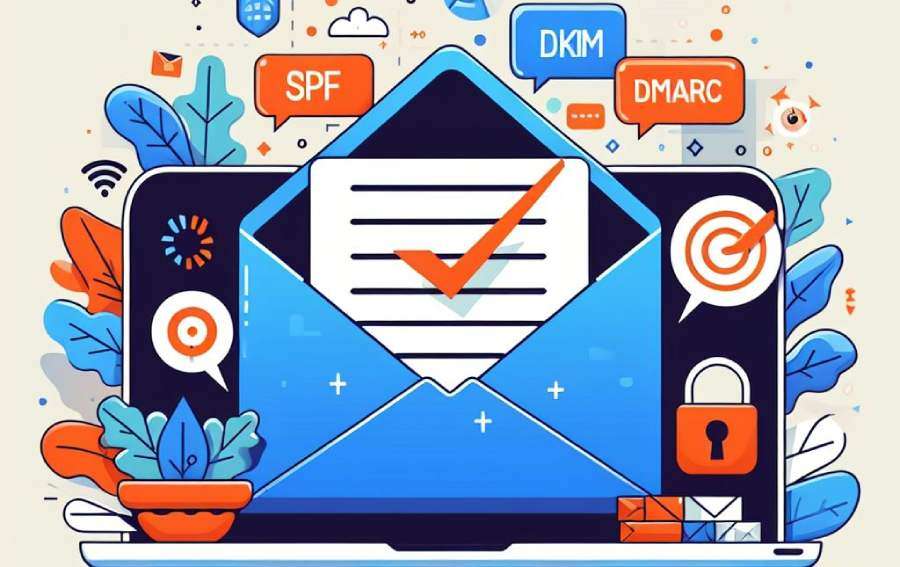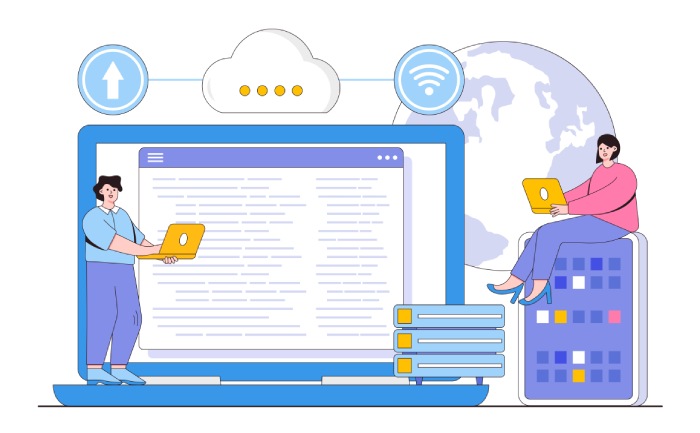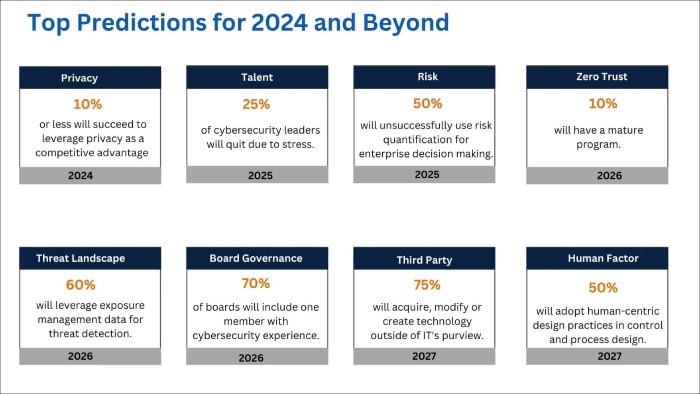Best Practices to Follow When Implementing SPF, DKIM, and DMARC
We are in 2024, and it’s officially the era of email authentication, especially after Google and Yahoo made it mandatory for organizations to protect their email ecosystem with SPF, DKIM, and DMARC. Now that email authentication has become the new norm; enterprises have no other choice but to level up their cybersecurity game by implementing robust email authentication protocols.
Considering the changing dynamics of the cybersecurity landscape, security teams are now compelled to put their best foot forward against malicious cyberattacks. What exactly do we mean by “putting their best foot forward?” It means that they should not simply employ email authentication protocols for the sake of it but tailor their authentication practices according to their needs, industry trends, threat landscape, and other factors.
Are you unsure how to crack the code and seamlessly implement SPF, DKIM, and DMARC? In this article, we’ll walk you through the best practices for each protocol and help you mitigate the risk of grave attacks such as phishing, ransomware, spoofing, etc.
What Should You Know About Employing SPF, DKIM, and DMARC?
SPF (Sender Policy Framework)
SPF is the first layer of defense against spoofing in your email authentication journey. It prevents attacks by allowing you to specify which IP addresses are authorized to send email from your domain. Implementing SPF is not as simple as listing your domains on the SPF record; it is riddled with complex and powerful mechanisms that, if implemented incorrectly, can cause confusion or even compromise your security.
Here are a few things to keep in mind when configuring SPF:
Simplify Your SPF Record
You might have heard that you should include all your IP addresses and servers authorized to send emails on behalf of your domain, but this might do more harm than good. While it is recommended that you incorporate all your mail servers on your SPF record, going overboard can result in errors, which can ultimately impact your deliverability.
Avoid “+all” Mechanism
Steer clear of the “+all” mechanism when implementing SPF! Security experts consider “+all” a major red flag because this mechanism validates all IP addresses sending emails on your domain’s behalf, including the fraudulent ones. This is as bad as not implementing SPF, or even worse. Imagine the financial and reputational damage this might cause to your business!
Keep CIDR Notation Range between /30 and /16
When it comes to mentioning the IP addresses in the CDIR notation in the SPF record, make sure to keep CIDR ranges between /30 and /16 inclusive. For instance, in “10.10.10.0/24” the range is 24, which indicates the size of the block, with smaller numbers representing larger blocks of addresses.
DKIM (DomainKeys Identified Mail)
DKIM adds a second layer of verification to your emails by adding a digital signature to them. But what exactly is this digital signature that is attached to the outgoing email’s header? Basically, this signature includes a private key that is published in your DNS records, which is later verified by the recipient’s server to determine if the email is legitimate.
Sounds easy, right?
There are certain things that you should be aware of when implementing DKIM or else it won’t be long before your email deliverability goes out for a toss!
Ensure Your Keys are at least 1,024 bits Long
If you want comprehensive protection for your email ecosystem, you should not rely on shorter DKIM keys. Experts suggest that your keys should be at least 1,024 bits long if not 2048 bits. The thing with longer keys is that they are difficult to crack for scammers. Besides, the ones with less than 1,024 bits are often completely ignored, rendering your efforts useless.
DKIM Key Rotation is Important
Another thing to keep in mind when employing DomainKeys Identified Mail is rotating your DKIM key regularly to avoid spoofing attacks and other security breaches. Since this email authentication protocol is built on cartographic signatures, it only makes sense to change it regularly, making it difficult for hackers to decode the key.
Are you still using the same key you created years ago? This is your sign to update the DKIM key immediately.
Switch Up the DKIM key for Each Customer
This one is for all the MSPs out there! While it might be convenient to use the same DKIM key for all your customers, it can wreak havoc on your security posture. Simply put, if the key is compromised or leaked, it could potentially impact all customers using that key. This is why it is recommended to use a unique DKIM key for each customer. It not only helps you enhance accountability but also keeps track of email authentication and integrity.
DMARC (Domain-based Message Authentication, Reporting, and Conformance)
DMARC works in conjunction with SPF and DKIM to provide policy guidelines on how an email should be handled once it reaches the recipient’s servers. Typically, while rolling out the DMARC protocol, you can set the policy to one of three options— None, Quarantine, or Reject.
Configuring these policies can be tricky, especially if you have never done it before. If you’re confused about how to perform DMARC authentication, follow the best practices mentioned below to ensure comprehensive protection against cyberattacks.
Advance Your Policies Gradually
When starting out with DMARC, you might be tempted to employ strict policies— “p=reject“, with an aim to block out malicious all at once. While this sounds ideal in theory, in practice, it can jeopardize your email deliverability by either rejecting legitimate emails or sending them to spam. This is why it is recommended to follow a slow and steady approach when advancing your DMARC policies.
You can begin by setting your DMARC policy to “p=none” (monitoring mode). Once you’re confident in SPF and DKIM alignment and have analyzed DMARC reports, you can consider moving to more stringent policies—”p=quarantine” and “p=reject.”
Leverage DMARC Reports
Most organizations overlook DMARC reports. These reports provide actionable insights into your email ecosystem, identify potential threats, and help ensure that legitimate messages are getting through.
Moreover, by regularly reviewing DMARC reports, you can gain a deeper understanding of how SPF and DKIM authentication mechanisms are performing across different sending sources. This allows you to pinpoint any authentication failures, address misconfigurations, and strengthen your email authentication policies.
Why You Should Bother Following These Best Practices?
The thing is, there’s no dearth of information online about protecting your emails with SPF, DKIM, and DMARC. But let’s face it, you cannot follow them all! However, there are compelling reasons why prioritizing these best practices is crucial.
By now, we have established that following best practices for SPF, DKIM, and DMARC are almost non-negotiable for a sound security posture. These protocols, when implemented correctly, work together to authenticate emails, verify sender identities, and protect against phishing attacks and domain spoofing.
So, by following best practices, you significantly reduce the risk of falling victim to these malicious activities and enhance your email security posture. You can also maintain a good sender reputation, build trust with recipients, and reduce the chances of being flagged as a source of spam or fraudulent activities.
That’s not all! Adhering to these recommended practices can prove fruitful, as it helps reduce the risk of legal consequences, financial losses due to fraud, and damage to your organization’s reputation.
Remember, these best practices aren’t mere guidelines that you ought to follow; they’re your armor in the war against email-based attacks, your key to maintaining sender reputation, and your way of ensuring secure and reliable email communications in an increasingly digital world.
Implementing SPF, DKIM, and DMARC like a Pro
Let’s face it: rolling out SPF, DKIM, and DMARC in this complex digital landscape is no cakewalk. It is normal to feel overwhelmed when keeping up with industry trends in the face of such grave cybersecurity attacks. After all, it involves navigating through a myriad of technical intricacies, understanding DNS configurations, working with email servers, and ensuring alignment across different authentication mechanisms.
However, with the right knowledge, tools, and strategies, you can master these protocols and significantly enhance your email security posture. For starters, you can break down the implementation process into manageable steps, collaborate with experts at DuoCircle, and stay proactive in addressing any challenges that may arise.
Our team at DuoCircle understands the complexities and challenges involved in implementing these authentication protocols and can help you stay on top of the latest industry trends.
From comprehensive phishing protection and spam filtering to extensive DMARC reporting and SPF management, we can help your organization with it all! Our solutions are designed to streamline the implementation process, making it easier for your company to enhance your email security posture and build trust with your recipients.
Let’s work together to strengthen your email security and safeguard your communication channels against phishing, spoofing, and email fraud.
Want more details about our wide range of services? Get in touch with us today or request a quote to learn more!


